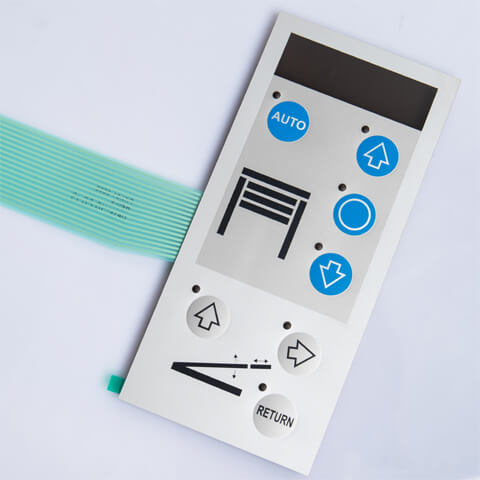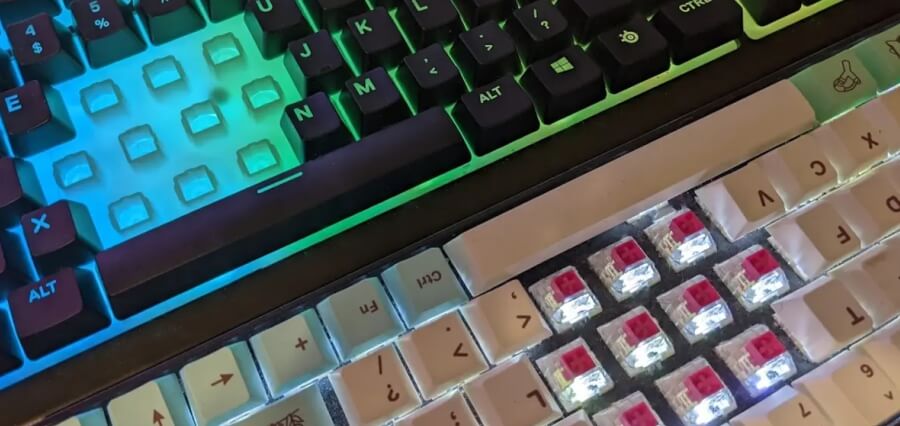Understanding the Functionality of Membrane Changes for User User Interface Instruments
The functionality of membrane switches stands for a substantial innovation in user interface design, integrating effectiveness with aesthetic versatility. As industries increasingly focus on customer experience, comprehending the nuances of membrane switch innovation comes to be important.
What Are Membrane Buttons?
Membrane switches are cutting-edge user interface gadgets that promote user communication with electronic tools. These versatile components include multiple layers, including a graphic overlay, spacer, and a published circuit layer. The design allows for a seamless assimilation into various electronic gadgets, improving both the aesthetic and practical facets of user interfaces.
Membrane buttons are commonly used in a vast array of applications, from home home appliances to commercial machinery and clinical devices. Their building and construction normally includes a thin profile, making them an ideal choice for portable layouts. The tactile responses given by these switches can be crafted to meet certain customer preferences, ensuring efficient communication in between the customer and the tool.
Longevity is an additional considerable advantage of membrane layer switches, as they are immune to dirt, wetness, and chemicals, which enhances their life expectancy in requiring settings. In addition, these buttons can be personalized in regards to form, size, and visuals style, allowing for branding and user-specific attributes. Overall, membrane layer changes stand for a sensible service for boosting customer experience in digital devices, integrating functionality with aesthetic charm in a reliable way.
Just How Membrane Changes Job
Operating on an uncomplicated concept, membrane changes make use of a layered building to register user input properly. Each switch includes numerous layers, consisting of a printed circuit layer, a spacer layer, and a top visuals layer, which are designed to collaborate seamlessly. When an individual presses the top layer, it presses the spacer layer, bringing the conductive components of the circuit layer into contact with each various other.
This call creates a closed circuit, signaling the device to execute a specific feature. The style enables different setups, including responsive feedback, which can boost the user experience by providing a physical sensation upon activation. The products used in membrane layer switches commonly consist of flexible substratums, such as polyester or polycarbonate, which guarantee longevity and durability versus deterioration.

Trick Benefits of Membrane Buttons

One more substantial advantage is their compactness. Membrane layer buttons are slim and lightweight, which makes it possible for producers to conserve space in their devices without sacrificing performance. This function is specifically beneficial in applications where weight and volume are crucial considerations.
In addition, membrane layer buttons are immune to dust, moisture, and chemicals, enhancing their longevity. This resilience prolongs their lifespan and minimizes the need for constant replacements, causing price financial savings with time.
Moreover, the tactile responses given by membrane switches can be enhanced to boost customer interaction. They can include functions such as increased switches or distinct clicks, improving usability and user experience.
Applications Throughout Industries
Individual user interface tools using membrane switches are prevalent in a wide range of industries, showcasing their flexibility and capability. Membrane Switch. In the medical field, membrane buttons are integral to devices such as analysis equipment and patient monitoring systems, where their durability and convenience of cleaning are crucial for keeping health requirements. In the automobile industry, these switches are used in control panel controls and infotainment systems, offering a sleek and contemporary interface for users.
Furthermore, the consumer electronics field benefits from membrane layer switches in devices and handheld devices, where small layout and user-friendly look at here now user interfaces improve user experience. Industrial applications also utilize membrane layer switches over for control panels in machinery and automation systems, stressing their toughness and resistance to harsh environments.
In the aerospace and defense sectors, membrane layer buttons are used in cabin controls and tools, where reliability and efficiency under extreme problems are vital. Additionally, the video gaming market significantly includes membrane layer buttons in controllers and gallery devices, adding to an interesting user experience. In general, the versatility of membrane changes enables their widespread usage throughout many sectors, underscoring their relevance in contemporary interface style.
Future Patterns in Membrane Switch Over Technology

Additionally, the why not try these out usage of sophisticated products, such as polycarbonate and polyester films, is expected to rise, providing enhanced durability and resistance to ecological stress factors. These materials contribute to the general long life of membrane buttons, making them suitable for harsher industrial applications.
Additionally, the incorporation of smart technology, consisting of IoT connectivity, will enable membrane buttons to connect with various other link devices and systems, facilitating a more interactive customer experience. This trend lines up with the growing demand for smart tools across various fields, from health care to customer electronics.
Lastly, modification options are anticipated to increase, enabling producers to create bespoke options tailored to details user requirements and preferences. These growths will place membrane layer switches as important components in the evolution of user interface technology.
Verdict
In final thought, membrane layer changes represent a pivotal development in customer interface modern technology, using a trusted and flexible option for diverse digital applications. As improvements in product science and touch sensing technologies proceed, the capability and applicability of membrane buttons are anticipated to broaden, enhancing their relevance in contemporary electronic tools.